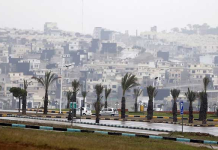SHANGHAI, MAY 21 (DNA): Just over a week after a tense ceasefire with India, Pakistan’s foreign minister reached Beijing, the nation’s largest arms supplier.
The visit comes as international analysts and governments alike are intensely scrutinising the performance of Chinese-supplied weaponry following recent aerial engagements between Pakistan and India.
A striking claim from four days of fighting earlier this month was Islamabad’s announcement that its Chinese-supplied jets had successfully shot down six Indian aircraft, including three French-made Rafale fighters.
This assertion has led some observers to view the alleged victories as a potent symbol of Beijing’s military might on the global stage.
However, experts who spoke to AFP have cautioned against drawing definitive conclusions about the prowess of Chinese equipment based on the limited scope of the recent skirmishes.
“This was a rare opportunity for the international community to gauge Chinese military hardware on the battlefield against Western (Indian) hardware,” noted Lyle Morris from the Asia Society Policy Institute.
While China pours hundreds of billions of dollars into defence spending each year, it lags far behind the United States as an arms exporter.
Stockholm International Peace Research Institute (SIPRI) senior researcher Siemon Wezeman told AFP that China’s drones are used in counter-terrorism operations, and its weapons have been deployed by Saudi Arabia in Yemen and against rebel forces in African countries.
“But this is the first time since the 1980s that a state has used large numbers of Chinese weapons of many types in action against another state,” said Wezeman, referencing the Iran-Iraq war when they were used on both sides.
Pakistan accounts for around 63% of China’s arms exports, according to SIPRI. In the recent fighting, Pakistan used the J10-C Vigorous Dragon and JF-17 Thunder planes, armed with air-to-air missiles. It was the first time the J10-C has been used in active combat, said the Stimson Center’s Yun Sun.
Islamabad’s air defences also used Chinese kit — including the HQ-9P long-range surface-to-air missile system — and deployed Chinese radar as well as armed and reconnaissance drones.
“This was the first sustained fight where the bulk of Pakistan’s forces used Chinese weapons and, basically, relied on them as their primary option,” said Bilal Khan, founder of the Toronto-based Quwa Defence News and Analysis Group.
India has not officially confirmed any of its aircraft were lost, although a senior security source told AFP three jets had crashed on home soil without giving the make or cause. Rafale maker Dassault has also not commented.
The Rafale is considered one of Europe’s most high-tech jets, while the J10-C “is not even China’s most advanced”, said James Char from Singapore’s Nanyang Technological University.
But if Pakistan’s claims are true, “this should not be surprising… considering that the Rafale is a multirole fighter, whereas the J-10C was built for aerial combat and is also equipped with a stronger radar,” Char said.
In the days after the dogfight reports, J10-C maker Chengdu Aircraft Company’s stock soared over 40%.
“We most likely will see more orders going to Chinese contractors,” said the Stimson Center’s Sun. However, “it will take time and significant reorientation by Chinese arms manufacturers for the country to be a big arms exporter,” said Jennifer Kavanagh from the US think tank Defense Priorities.
She noted that China “cannot mass-produce certain key inputs, including aircraft engines”.
Wezeman said he thought the stock markets “overreacted”, as “we still have to see how well all the weapons used worked and if it really means much”. Even if more data emerges, the conflict still does not reveal much about the Chinese military’s own capabilities, the analysts said.
China’s own systems and weapons are much more advanced than what it exports. And while having high-tech hardware is important, “much more important is how those weapons are used,” said Kavanagh.
Brian Hart of the Center for Strategic and International Studies (CSIS) said he would caution against “reading too much” into recent developments. “I don’t think you can make direct comparisons to how these Chinese-made systems would fare in different environments against more advanced adversaries like the United States,” he explained.
“Since the number of data points is small and since we don’t know much about the proficiency and training of the personnel on either side, it is hard to draw definitive conclusions,” said Kavanagh.
















